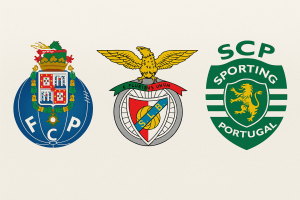LEADING HIGH-PERFORMANCE TEAMS
By Jorge Araújo
Former professional basketball coach
Anyone who leads high-performance teams must first be clear that the people they lead are people, not human resources as they are usually called.
People who interact with each other in the service of common goals.
First of all, it’s a collective context with enormous relational complexity, because each person in a team, including the leader, has individual goals.
But that’s not all!
They are always communicating with each other (even when they don’t speak). When in a team and continuously, automatically and unconsciously, the members of a high-performance team influence and are influenced. As everyone is at the service of common goals, at certain times and without exception (including the leader!), it is up to everyone to make the necessary sacrifices for the team and their colleagues.
In order for the “whole to be greater than the sum of its parts”, in a high-performance team there is a need (with some insistence!) for everyone to serve the team rather than the other way around. This means that those who lead must not only be experts in terms of operational and technical requirements, but also competent in terms of behavior. A leader of a high-performance team must be able to be the example that mobilizes and inspires a common collective “will”.
I repeat!
We are facing an enormous complexity that requires those who lead to get people who are naturally focused on their particular interests to serve the team and its common objectives, working as a team. What’s more, all these teams, whether sports or business, always have a certain time frame.
They form, reveal relational Conflicts, “resolve” them and Normalize from a relational point of view, then “enter” a phase of Surrender. This evolution is naturally very sensitive and dependent on four variables: Leadership, Operational Management, Relations between team members and the Environment.
Any High Performance team needs to be able to continuously overcome the so-called “critical success factors”. Respectively, relational conflicts, being able to “build” personal relationships of mutual trust and commitment to common goals, continuously monitor their implementation and continuously improve.
If it doesn’t get better, it gets worse!
That’s why, in order for this continuous improvement to be a reality, a leader of a High Performance Team has to behave on a daily basis, focused on their tasks, hard-working and passionate about what they do, competent at a technical and behavioral level. But, above all, being able to provide something decisive and necessary to each member in particular, as well as to the team as a whole, in a complementary way at the different moments of collective life. I’m referring to the fact that people, team members, gradually need constant support from the leader on a physical, mental, social, emotional and spiritual level.
Many reasons to illustrate that it’s not easy to be the leader of a high-performance team! And if proof were lacking, our sporting and business reality is proving it. Very few manage to be effective in their respective performances…
Dr. Fernando Gomes was able to demonstrate in an exemplary way that, while difficult, it is not impossible.
Here’s my acknowledgement.
Jorge Araújo






